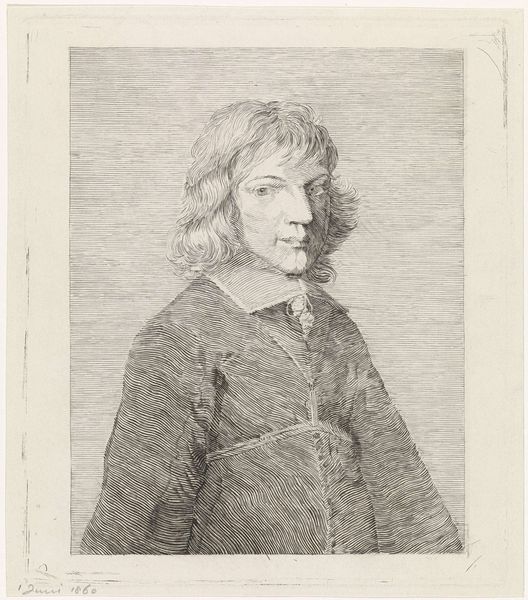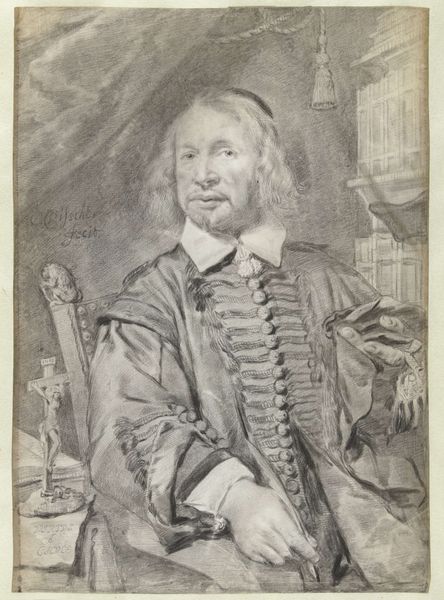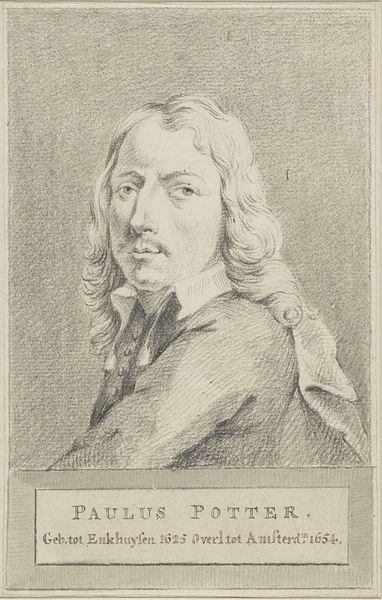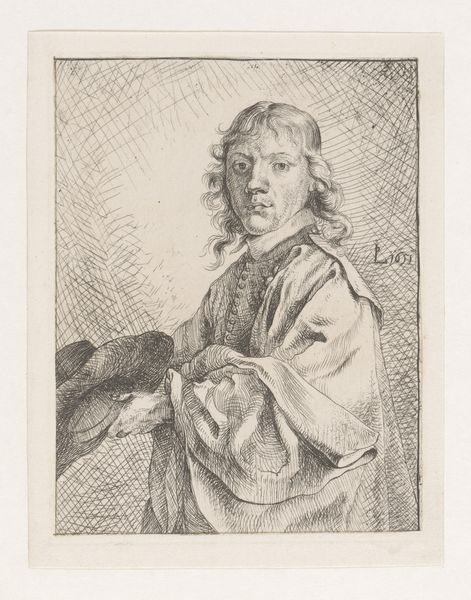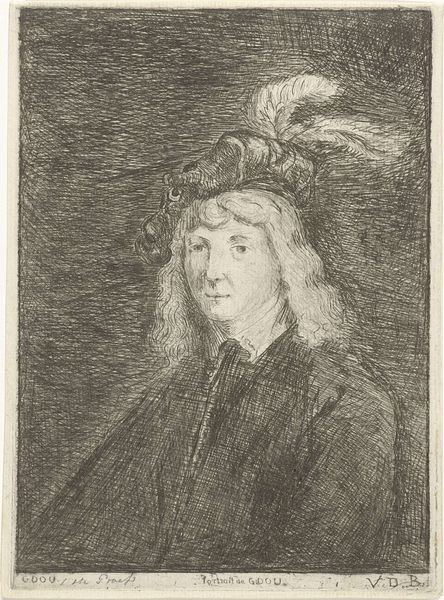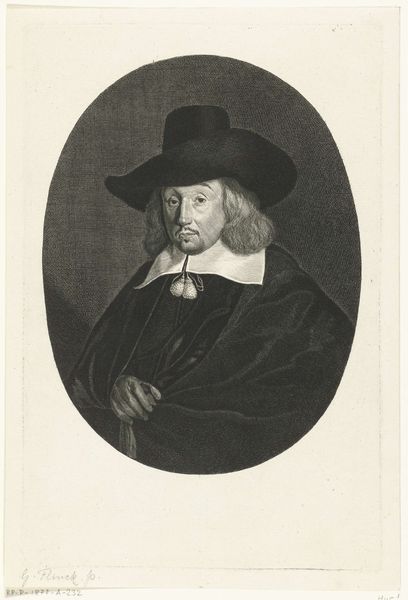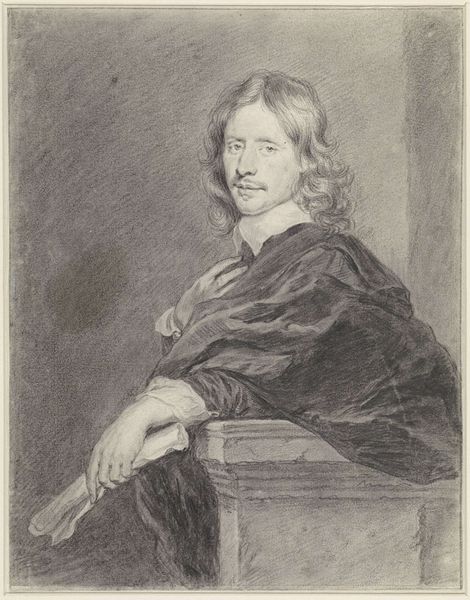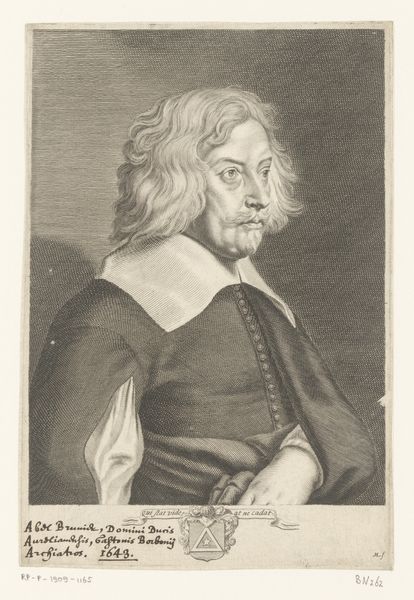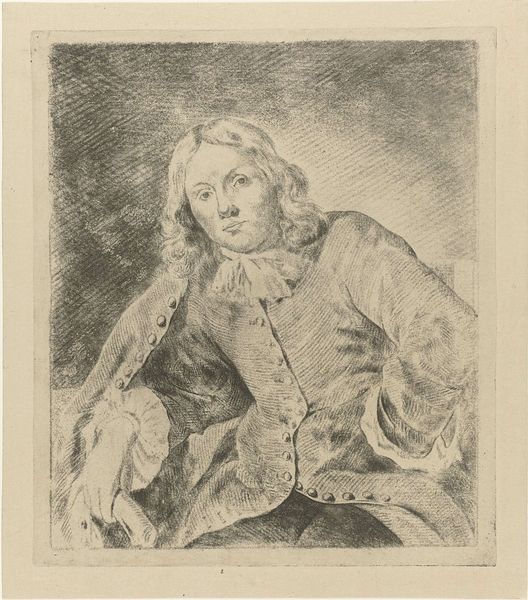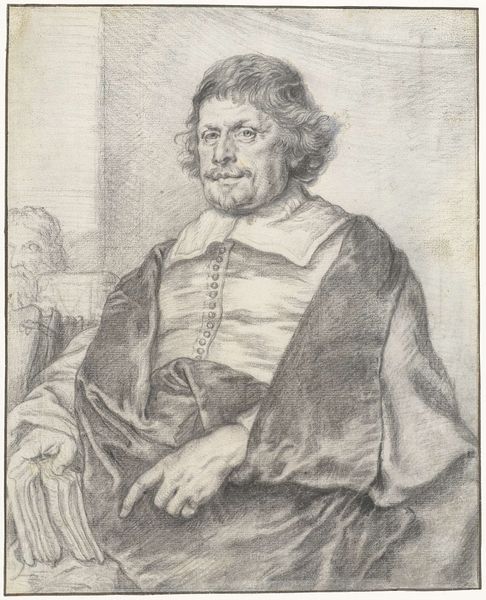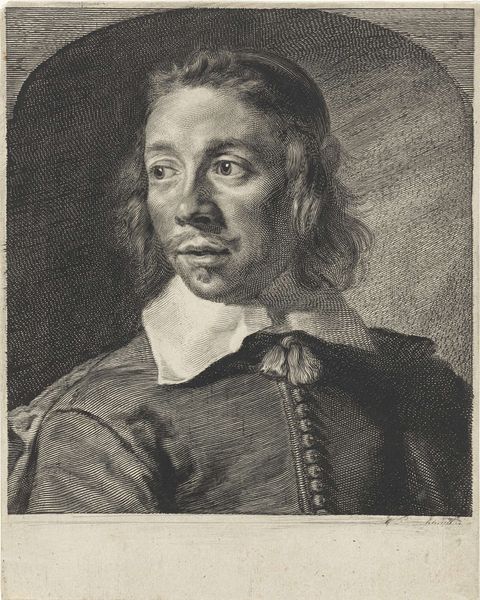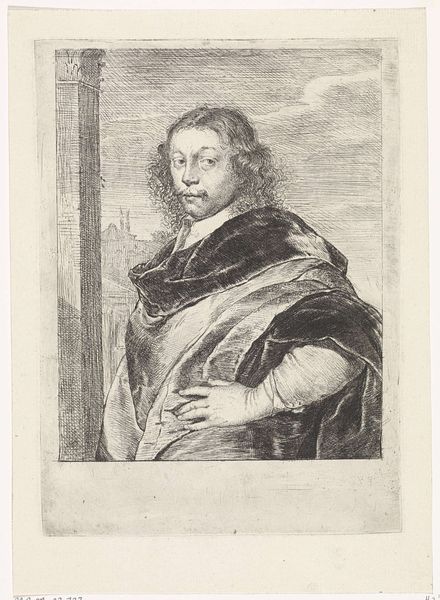
Portrait of a Man, Probably Philips Wouwerman (1619-1668) c. 1650 - 1700
0:00
0:00
cornelisvisscher
Rijksmuseum
drawing, charcoal
#
portrait
#
drawing
#
dutch-golden-age
#
charcoal drawing
#
figuration
#
charcoal
Dimensions: height 310 mm, width 243 mm
Copyright: Rijks Museum: Open Domain
Curator: Good morning. We are looking at Cornelis Visscher's "Portrait of a Man, Probably Philips Wouwerman (1619-1668)," a charcoal drawing from sometime between 1650 and 1700. The sitter's slightly raised hand seems to invite a closer look, wouldn't you say? Editor: It certainly does, but his direct gaze also projects an air of guarded privilege. The slightly askew coat hints at both a sense of nonchalance and, potentially, underlying social commentary given the period. It looks like a portrait celebrating and quietly questioning status. Curator: An astute observation! Considering Visscher's reputation for detailed engravings, this drawing seems rather loose, even spontaneous, in its handling of light and shadow. Look at the wavy flow of the man’s hair against the sharp geometry of his collar and cloak. Editor: Yes, and that asymmetry plays a significant role. We should think about the Golden Age Netherlands and its evolving merchant class, and the role portraiture had in constructing masculine identity. The way Visscher uses charcoal gives the work a compelling tension, doesn't it? The man's self-possession almost vibrates off the page. Curator: I agree. Visscher masterfully employs chiaroscuro. The contrasting darks and lights don’t merely depict; they almost sculpt the figure, providing us with planes and structure. Note the deep blacks of the cloak, contrasted by the barely there indications of his facial features. Editor: That interplay is where the image truly speaks. It's about the negotiation between visibility and erasure, presence and absence, mirroring larger power structures. The incomplete nature of the medium reminds us that these were often idealized, performative constructions of self. The portrait raises vital questions about the illusion of permanence and authenticity in representing the sitter’s identity. Curator: Well, whether idealized or not, Visscher's technique gives us a glimpse into a man of his time, mediated by the formal considerations of the period, the artist, and the very act of portraiture itself. Editor: Agreed. Ultimately, it makes us reflect on the complex relationship between the artist, the sitter, and the society that shaped their identities and ours.
Comments
No comments
Be the first to comment and join the conversation on the ultimate creative platform.
